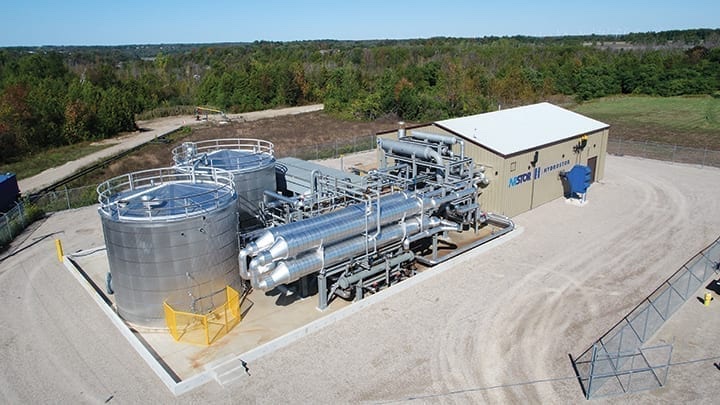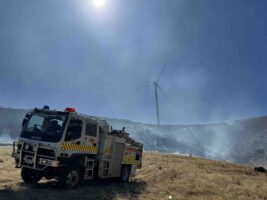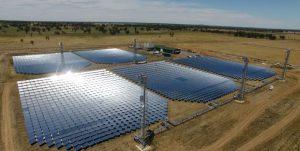In 2020, Australia passed a significant milestone, with a quarter of all energy coming from renewable sources.
However, if Australia is going to replace retiring fossil fuel plants, achieve net zero by 2050 and capture the opportunity to become a renewable export superpower, significant hurdles need to be overcome to decarbonize the energy sector.
In particular, both wind and solar power are variable energy sources: how can these energy sources provide power during periods when the sun isn’t shining and the wind isn’t blowing? Without addressing this, in a future without fossil fuels, how can Australia manage the risk of ‘dark doldrums’?
The need for long-duration energy storage
Intermittency can be managed to an extent by ‘short-duration’ energy storage, like the grid-scale lithium-ion battery systems currently in operation.
However, this system doesn’t shift large quantities of electricity from periods when the sun is shining or the wind is blowing to meet demand at other times of day, which is already becoming important on the Australian grid.
Shifting energy available in the eight-hour solar window to other parts of the day is becoming increasingly important, with negative price events across the NEM increasing in frequency due an oversupply of energy when the sun is up.
At the same time, afternoon peak prices are often high, indicating a shortage of supply in these periods relative to demand.
Recent outages of large coal-fired generators in Queensland and Victoria have illustrated the need for greater dispatchable capacity in the system. This is where ‘long-duration’ storage has a critical role to play.
New South Wales is addressing these intermittency challenges. The NSW Government recently passed the Electricity Infrastructure Investment Act (known as the Roadmap) to manage energy intermittency and extract maximum value from existing grid assets.
The Roadmap prioritises the development of new large scale energy storage facilities that can be dispatched for eight hours or more in duration per cycle.
We’re also seeing significant and sustained levels of investment in long-duration energy storage happen beyond Australia’s borders.
For example; Saudi Aramco Energy Ventures invested in Energy Vault to accelerate its global deployment of its energy storage solution; Bill Gates and Jeff Bezos invested in iron-flow batteries via Breakthrough Energy Ventures; Sumitomo Corporation invested in UK-start up Highview Power and their cryogenic liquified air storage system; and our team at Hydrostor closed a financing round including a strategic partnership with infrastructure investor Meridiam.
Compressed air storage (CAES) – an under-represented resource for Australia
CAES has an operational history exceeding 50 years and, although it is not well-known in this country, it is well suited for application in Australia. Newer forms of CAES have wide applicability in areas of critical grid need in Australia, without requiring massive transmission investments to come to fruition (as is often the case with pumped hydro storage for example).
Furthermore, the US Department of Energy (DoE) recently identified CAES as the lowest cost form of long-duration energy storage.
CAES uses atmospheric air compressed to high pressure and stored underground in caverns. When power is needed, the air is released to turn a turbine and convert the energy back into electricity.
Hydrostor has developed and built an Advanced-CAES (A-CAES) system which is emissions-free and can be flexibly-located.
In 2020, Hydrostor’s 200 MW and 8 hours (or 1,600 MWh) A-CAES system was selected by New South Wales’ Transmission Network Service Provider, TransGrid, as the preferred option in its RIT-T process for reliable supply for Broken Hill.
Hydrostor and Energy Estate are now actively developing this project, which has received grant funding from the NSW Government’s Emerging Energy Program.
This project not only provides a clean and cost-effective way of meeting New South Wales’ needs for reliable electricity well into the future, but also would contribute more than AUS$500 million to the economy, via construction and operational expenditures and enduring jobs.
Simultaneously, Hydrostor is developing 1,000 MW of long-duration energy storage via two A-CAES facilities in California, which like New South Wales is planning for its future energy needs.
There are also other forms of long duration energy storage that use mechanical and thermal means of storing electricity for long periods, and can provide promising alternatives to standard pumped hydro storage or utility-scale batteries.
Why can’t this be done with pumped hydro or batteries?
The long-duration storage market is currently dominated by pumped hydro, including the much vaunted, but in our view rather expensive, Snowy Hydro 2.0 project.
Pumped hydro is a system that uses water pumped up a hill and stored until power is required, at which point the water is released down the hill turning generators and converting the energy back into electricity for the grid.
Over 95 per cent of all long-duration storage globally is currently provided by pumped hydro. However, this technology is location-dependent to be economically feasible and options that do not require significant new transmission lines are running out.
Moreover, locations are often not near where the storage is required, and can be environmentally and socially destructive as well as taking years to permit and construct.
Another key factor is water security. Australia is the driest continent on the planet and in many parts of Australia there aren’t adequate supplies of water to pump and trap large quantities of water in a reservoir to create energy security (let alone dealing with the evaporation risk).
Australia isn’t alone in facing this issue and water security is being exacerbated by climate change in many parts of the world.
Batteries face different barriers. Primarily, capital costs for battery cells have been coming down but remain high for long-duration solutions and they have short cycle lives.
Grid-scale battery suppliers like Tesla also typically don’t offer systems longer than four hours of duration by default: consequently, there are few battery projects with a duration greater than four hours, nor are there forecast to be at the scale needed for the transition of an entire energy system.
Batteries will continue to play a critical role in short-duration arbitrage, but there must also be long-duration energy storage to meet the needs of Australia’s rapidly transforming energy system. As we move to much greater levels of electrification and away from dependence on fossil fuels, we need more energy security not less.
If the heating and lights in our homes, the performance of our induction stove, and all our transport options are reliant on electricity, we are going to want to have a range of dependable climate-resilient energy storage options.
Enabling the renewable transition
To achieve energy security in a net-zero world will require us to look beyond conventional fossil-fired generation, never-ending grid duplication and short-term economic thinking on energy storage deployment. New forms of long-duration energy storage are needed beyond pumped hydro and batteries.
A-CAES is an example of a new form of long-duration storage, built using existing and proven technologies from mining and gas operations, that can be cost-effectively deployed where it’s most needed; beside substations, new mines producing the critical minerals we need, large industrial users, transmission congestion points, or even in cities. The possibilities are endless.
Co-authored by Jon Norman, President, Hydrostor, a long-duration energy storage solution provider and Simon Currie, Principal, Energy Estate, developer and accelerator for the energy sector.










